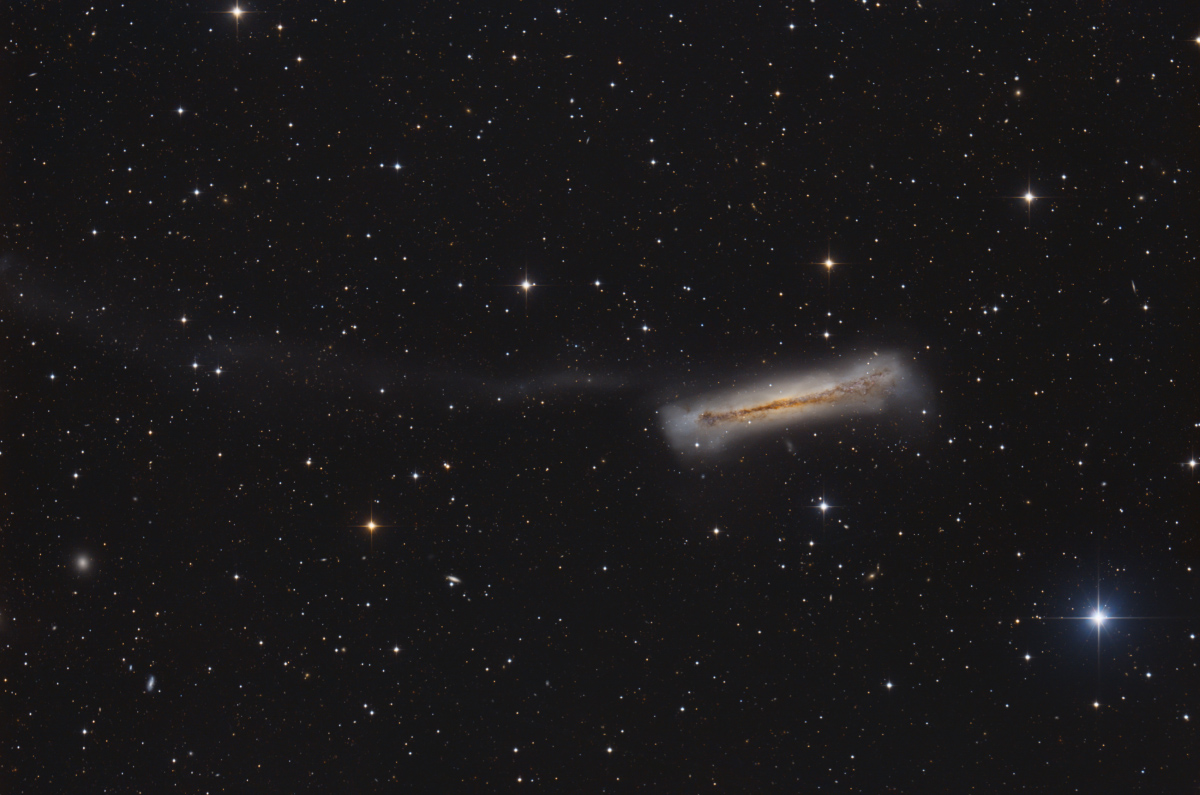
[back] NGC 3628 in Leo
Higher resolved image / höher aufgelöstes Bild (5000 x 3311 Pixel)

|
(c) 2022 All astro photo images are copyrighted. They may not be used or reproduced without explicit written permission from the authors. |
|
5' |
|
About this Image / Über dieses Bild
| CCD: | ZWO ASI094MC Pro |
| Image Type, Orientation: | RGB image, North is at 12:00h |
| Exposure time: | 69x300s, all 1x1 bin (5:45h total) |
| Exposure date: | February 28th and March 2nd 2022 |
| Location: | Capella Observatory at Eifel, Germany, remote-controlled from Bad Arolsen/Germany |
| Filter: | RGB: Internal Bayer-Matrix |
| Instrument: | Ganymed 60cm-Hypergraph in primary focus (f=1815.9 mm) |
|
Image seeing (FWHM): |
~2.3" |
| Photographer: | Josef Pöpsel, Frank Sackenheim, Stefan Binnewies |
| Remarks: |
This image was taken just before the corresponding ones
of M65 and M66 to merge them
together into a two-fold mosaic
of the Leo triplet. In contrast, the total exposure time is almost twice
as long to clearly show NGC 3628's faint tidal tail. A faint diffuse spot can be seen about 2/3 of the distance between the yellowish star in the lower left part of the image and the clearly visible background galaxy lower right to the star. This is the dwarf galaxy [JMK2016] NGC 3628-DGSAT-1, which was only discovered in 2016 (see here). Comparing this image with the corresponding section of the SDSS, the limiting depth of the image above can be estimated at around 27 to 27.5 mag/arcsec². It is therefore a bit higher than the 26.5 mag/arcsec² of the 2.5m Sloan telescope ;-) (which was bought with a significantly longer exposure time). |
|
|
|
|
Bemerkungen: |
Dieses Bild entstand kurz vor dem entsprechenden von M65 und M66, um beide zusammen zu einem Zweifach-Mosaik des Leo-Tripplets zu vereinigen. Im Gegensatz hierzu ist die Gesamtbelichtungszeit fast doppelt so lang, um den leuchtschwachen Gezeitenschweif von NGC 3628 deutlich zu zeigen. Zwischen dem gelblichen Stern im unteren linken Bildfeld und der unten rechts vom Stern deutlich zu erkennenden Hintergrundgalaxie ist etwa auf 2/3 des Abstands ein schwacher diffuser Fleck zu erkennen. Hierbei handelt es sich um die erst 2016 entdeckte Zwerggalaxie [JMK2016] NGC 3628-DGSAT-1 (siehe hier). Vergleicht man diese Bild mit dem entsprechenden Ausschnitt der SDSS, so kann die Grenzgröße des Bildes oben auf etwa 27 bis 27,5 mag/arcsec² abgeschätzt werden. Sie ist somit etwas höher als die 26.5 mag/arcsec² des 2,5m Sloan-Teleskops ;-) (was mit deutlich längerer Belichtungszeit erkauft wurde). |
Back to the Galaxies' Overview / Zurück zur Galaxien-Übersichtsseite